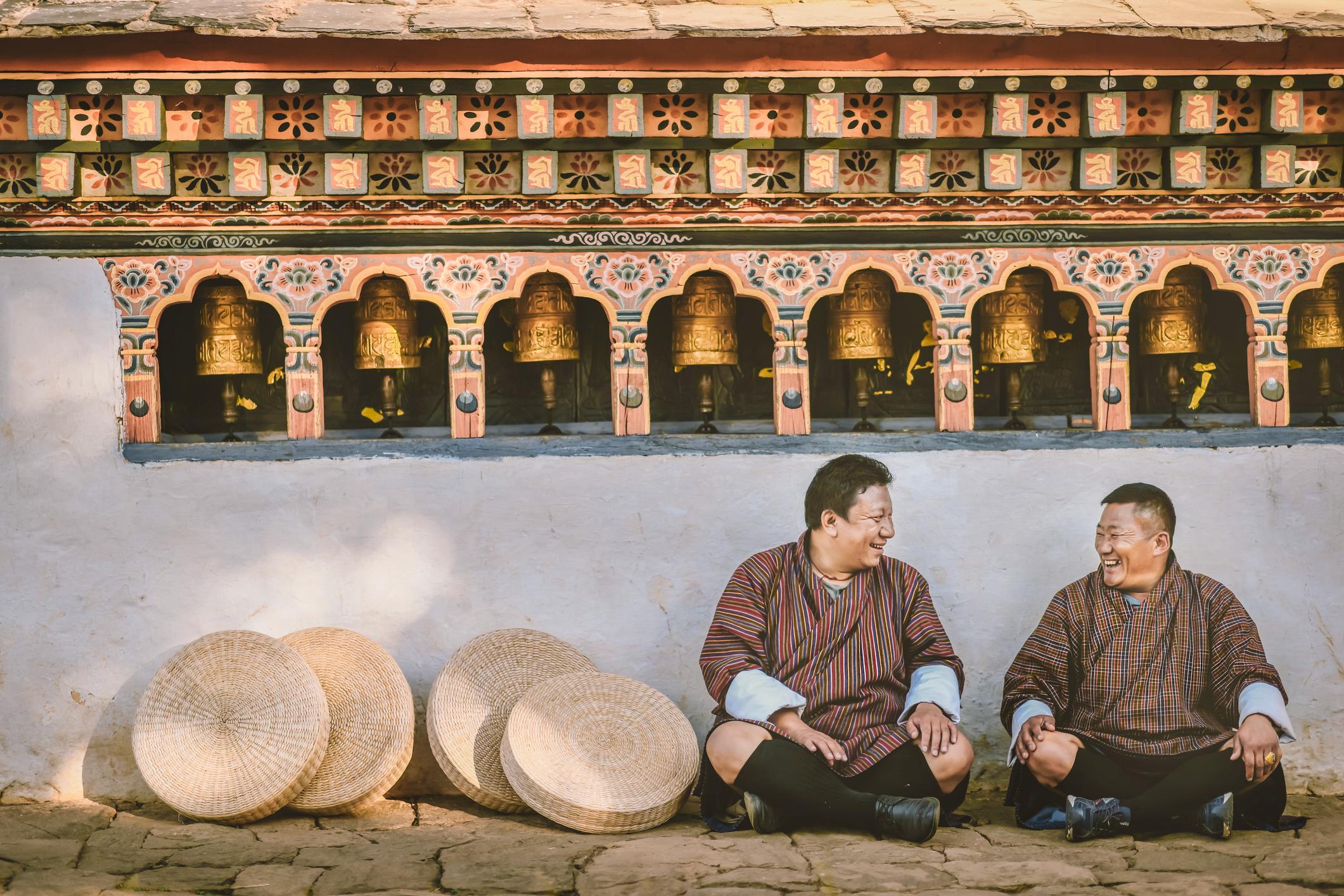Bhutan is a country of multitudes. It is the ‘Land of the Thunder Dragon’, a place where myths and legends are often indecipherable from foundational history. This is a country of high mountains and low valleys, of rivers, terraced paddy fields, suspension bridges and prayer flags. It is the last Himalayan kingdom, where Buddhist monasteries hang daringly off cliffs.
The country is perhaps best known, however, for a style of governance.
In Bhutan, they measure growth and success not through Gross Domestic Product (GDP), but by Gross National Happiness (GNH) - a development strategy which focuses on holistic wellbeing over pure economic growth.
The purpose of the government is to provide happiness to its people. If it cannot provide happiness, there is no reason for the government to exist.
“You will know that our country; our King coined a development philosophy of Gross National Happiness,” explains Karma Lotey, a native with decades of experience working in sustainable tourism and development in Bhutan. “That impacts on the day-to-day lives of our people.”
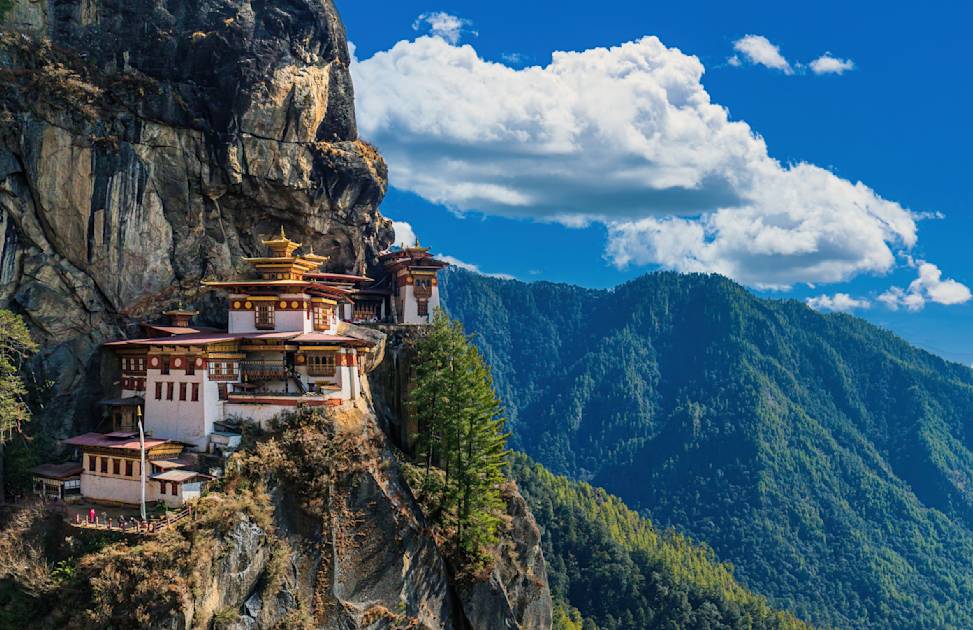
Gross National Happiness harks back to the first legal code written in the kingdom of Bhutan, during the unification of the country in 1729. That code declared “the purpose of the government is to provide happiness to its people. If it cannot provide happiness, there is no reason for the government to exist.”
The Pillars of Happiness
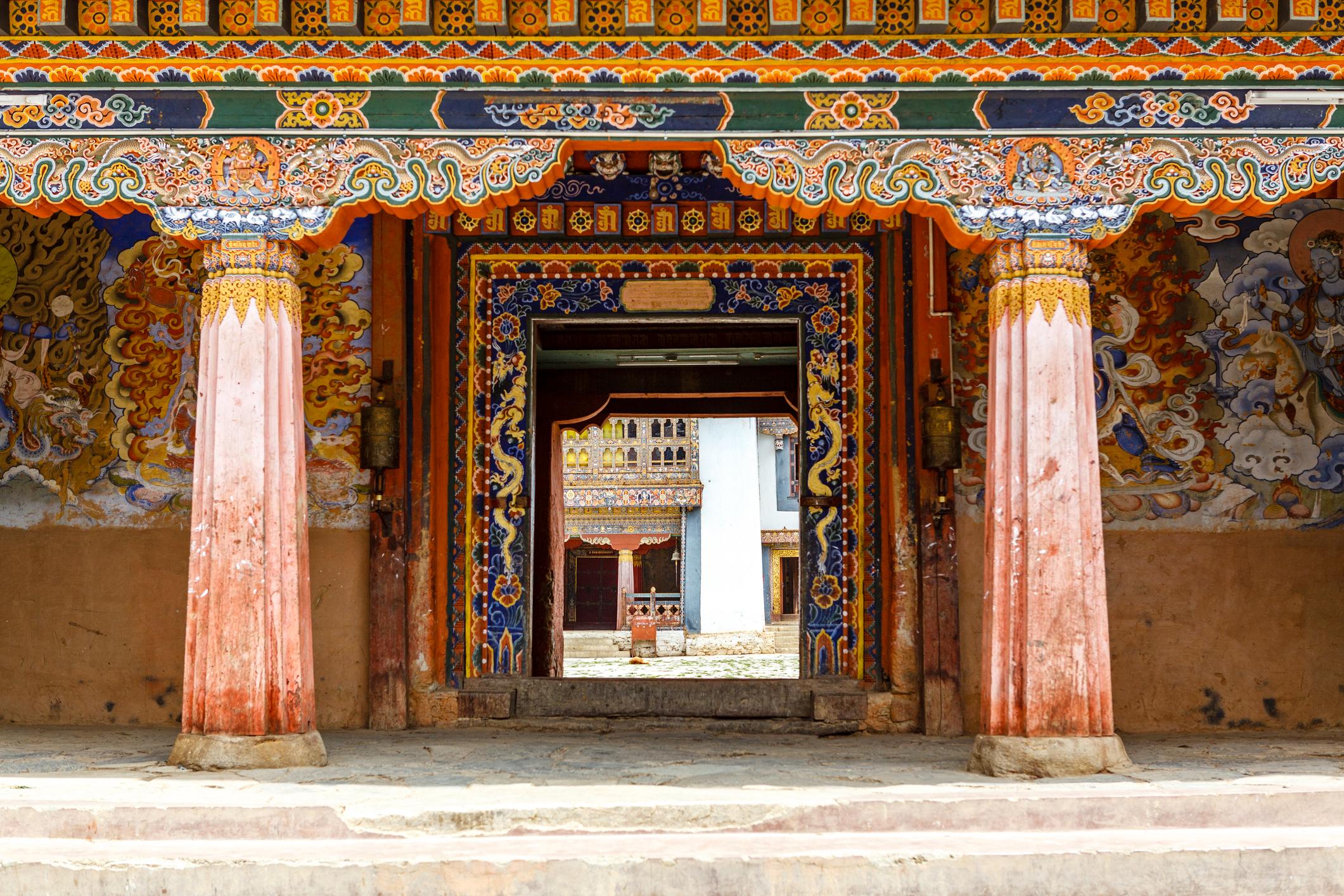
The four pillars of Gross National Happiness are: good governance, sustainable development, preservation and promotion of culture and environmental conservation. And it’s not just for show - the GNH Screening Tool is a system in place to ensure that all development policies are reviewed by the government through the GNH lens. Propositions involving mining, tobacco sales and building through sacred sites have been modified or stopped by this fail-safe.
These four pillars were created by the GNH Centre in Bumthang. The pillars exist, they say, in the nine domains of Gross National Happiness, which are:
- psychological well-being
- standard of living
- good governance
- health
- community vitality
- cultural diversity
- time use
- education
- ecological resilience
The GNH philosophy has led to policies like free universal healthcare focused on physical and mental being, school curriculums focusing on mindfulness, compassion and sustainability as well as academic achievement, and policies to preserve Bhutanese languages and tradition. Economic policies prioritise equity and urban development values green spaces and walkability.
Gross National Happiness has also led to extensive environmental protections in Bhutan. “We have 72% forest cover at the moment in the country,” says Karma, “and our constitution decrees that we should have 60% of forest cover at all times to come. We are in the Eastern Himalaya, and we have a very fresh, very lush forest environment. Bhutan is pristine.
“Another thing is that we are the first carbon negative country in the world.”
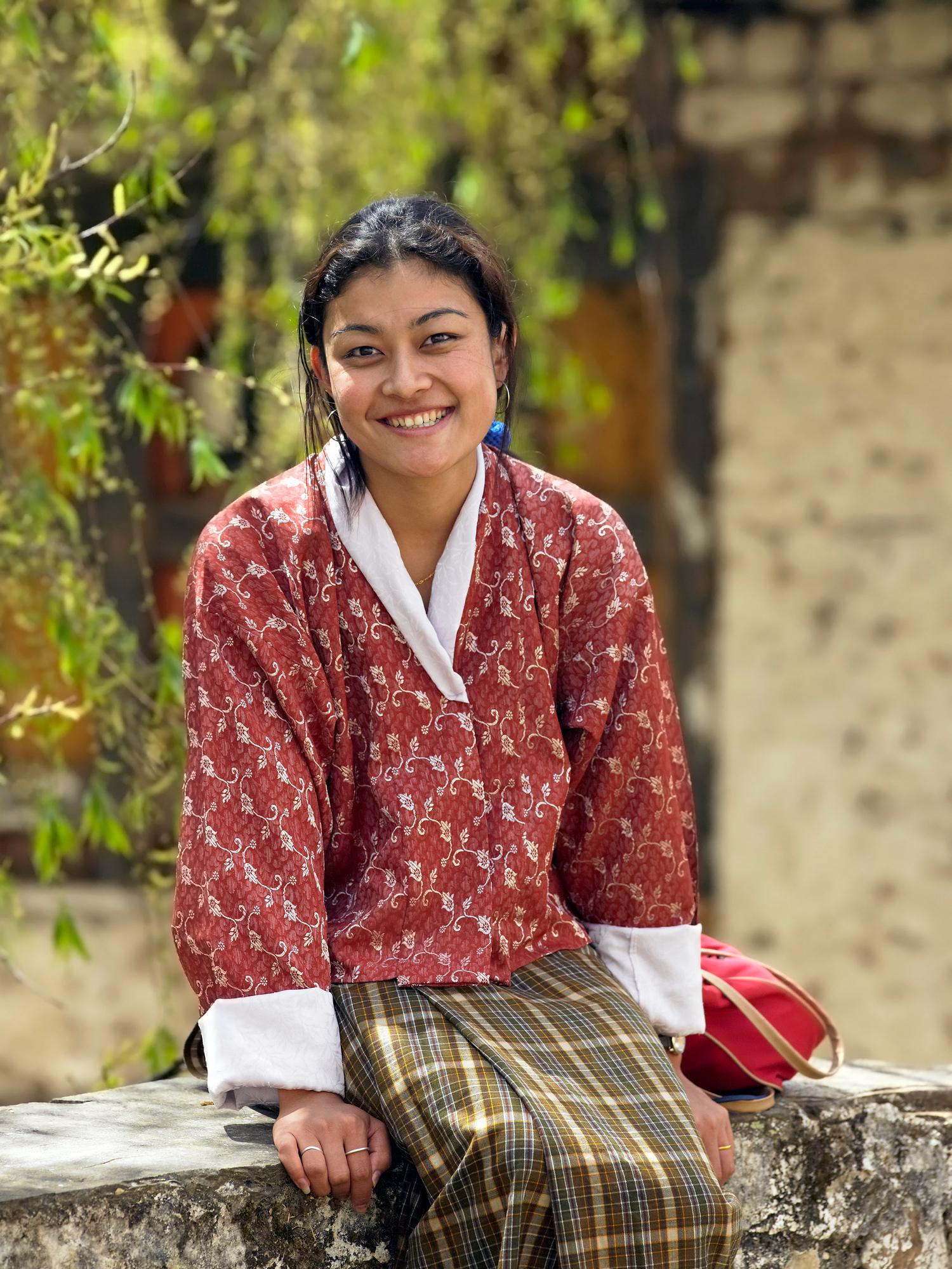
The national happiness of the country is monitored through the GNH Index, which uses 33 indicators including physical health, relationships and emotional well-being to create a population happiness score.
As of 2022, that score was 0.781, representing a growth in national happiness of 3.3% vs. 2015, and indicating that 48.1% of the population was happy. Out of people living in rural areas, 57% were considered happy, while that figure dropped to 43% for those living in urban areas.

Notably, the country still faces many similar problems to its neighbouring countries - youth unemployment, mass emigration of educated Bhutanese and urban-rural disparities, but GNH has had a global impact - influencing the UN World Happiness Report, being cited by New Zealand, who crafted “wellbeing budgets” inspired by it, and sparking interest at the UN General Assembly.
The philosophy of GNH draws on the religion Buddhism, central in Bhutan.
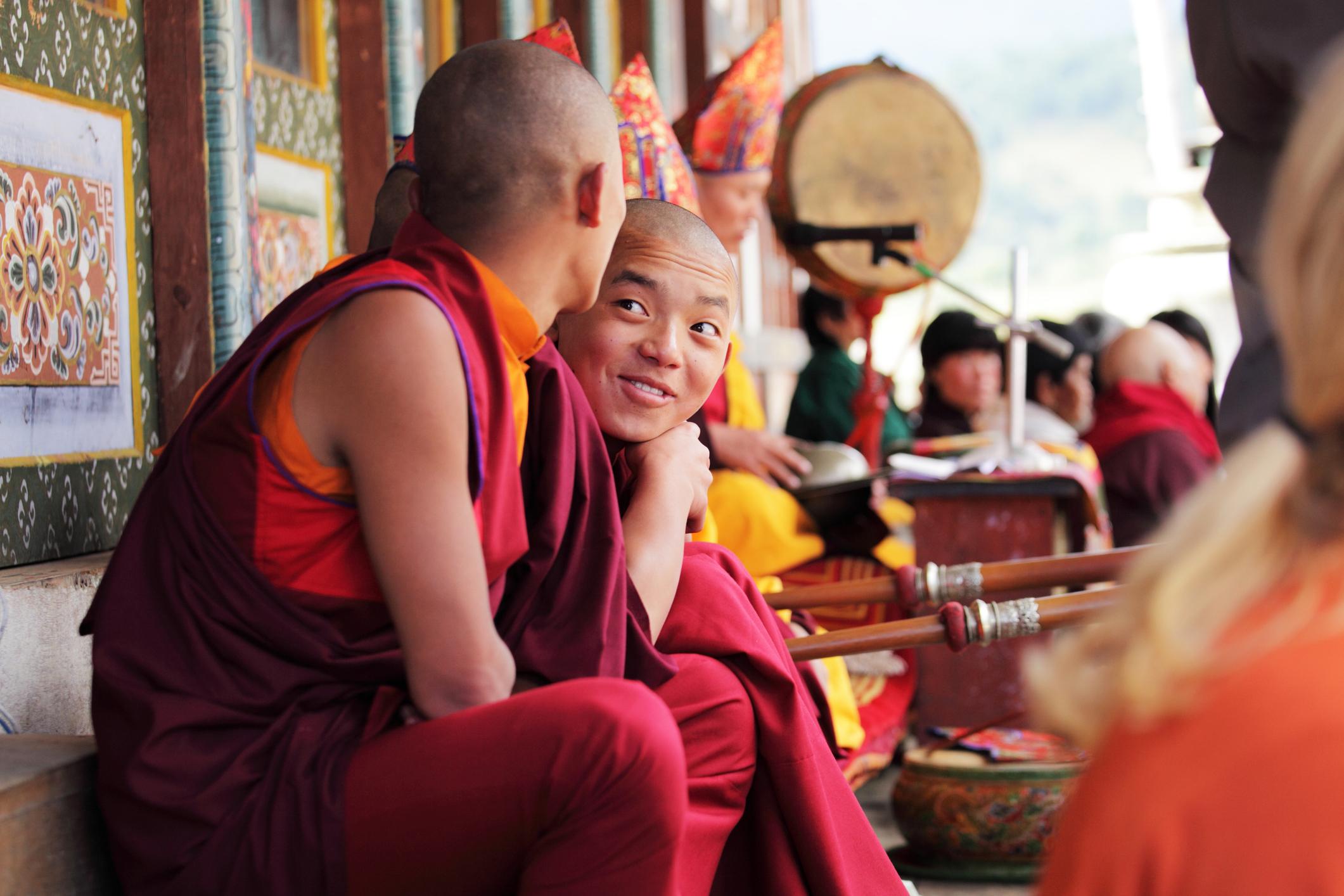
“Spirituality and spiritualism is really important in the day-to-day life of all of us Bhutanese,” says Karma. “Buddhism is part and parcel of the way of life in our country. For us, it’s not a religion; it's a way of life. It's all about mindfulness. It's all about sustainability.
Many of our guests come here and say 'my goodness, your guides are so compassionate, so kind.
“Gross National Happiness is, to some extent, based on the principles of the philosophy of Buddhism. Bhutan is still very intact with tradition and culture and the guests that visit here really love experiencing that. There are many temples to visit; many mindfulness meditations, and you visit people in their homes and farms to experience that first hand.”
“Our day to day lives, to reiterate, it's Buddhism - mindfulness; sustainability, a sense of spirituality and compassion. Many of our guests come here and say 'my goodness, your guides are so compassionate, so kind'. We are born, bred and raised that way, so amongst ourselves we don’t see that, but when guests visit, I think it becomes visible to them.”
High Value, Low Volume Tourism
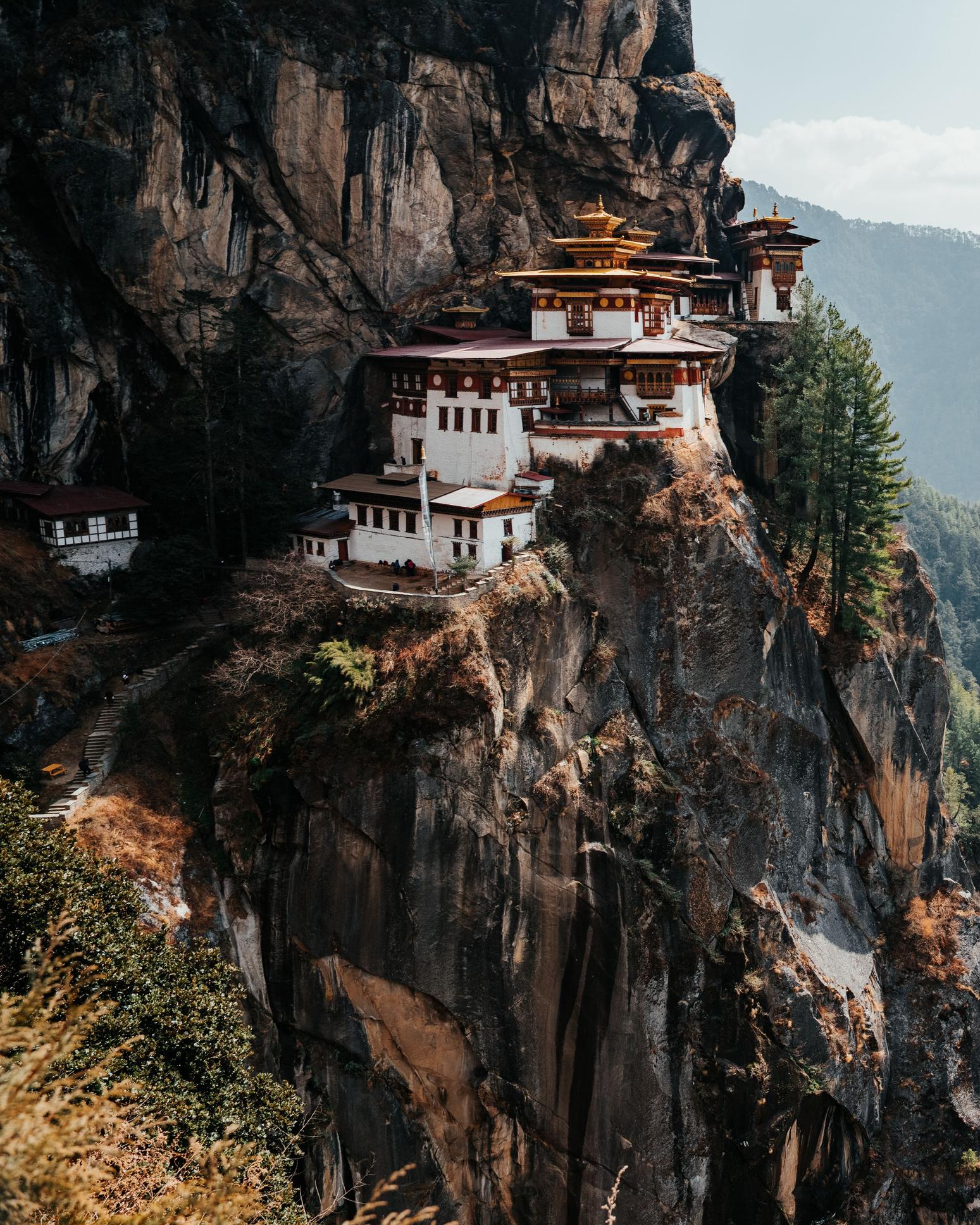
One of the most fascinating ways that GNH has been implemented in Bhutan is through their famous “high value, low volume” approach to tourism. The country has, effectively, priced many out of going to the country to create a positive-impact tourism model, avoiding overtourism and the stretching of resources, while still bringing new income streams into rural areas.
“Tourism began as early as 1974 here, during the coronation of our fourth king,” Karma explains. “He’s 70 years old and his son, 44, is the King now.”
King Jigme Singye Wangchuk gave up absolute power in 1998, ruling in conjunction with the government and a royal advisory council. He announced he would step down and be succeeded by his son - the current King Jigme Khesar Namgyel Wangchuck - when the country held its first national democratic elections in 2008. He was true to his word, abdicating in December 2006.
The implementation of democratic governance itself was guided by GNH principles to empower citizens, and when the Constitution of Bhutan was created, it also centred on those principles. So while Bhutan was keen to welcome tourism, it was also keen to make sure it didn't spiral out of control.
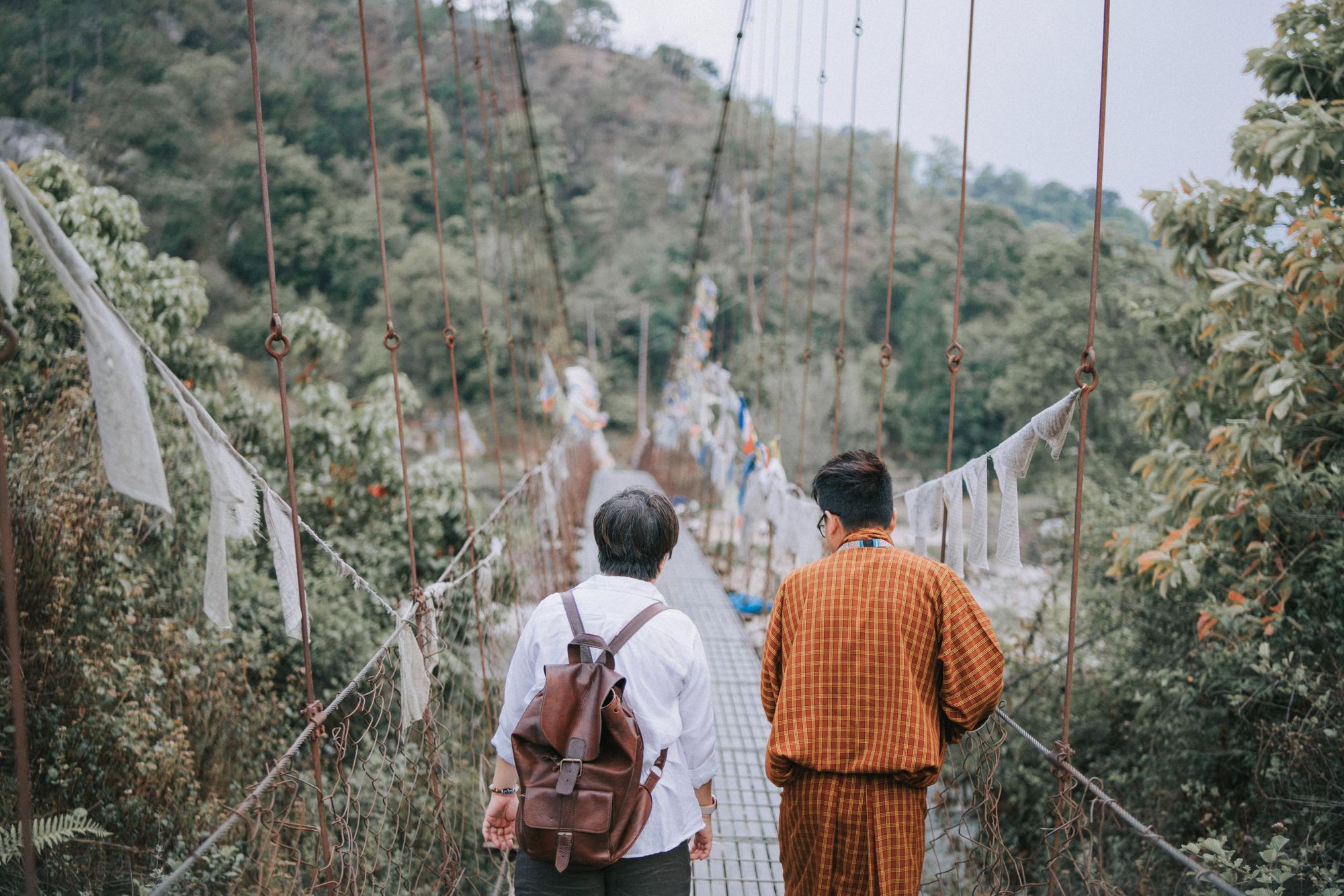
It was this which led the Bhutanese government to implement the Sustainable Development Fee (SDF), a daily levy paid by visiting tourists, designed to promote sustainable tourism in Bhutan and support the country’s development. It is collected as part of the visa process, and for non-regional visitors, it is $100 US per person, per night, for the length of the stay - a substantial figure.
“High value, low volume was coined back in 1974," says Karma. "What it means is that we are not looking for mass tourism. We are looking for tourism with quality, tourism with value - because we are such a small country. We have barely 750,000 people, and infrastructure is not at its best throughout the country, so our carrying capacity is also less, although it’s always improving.
The sustainable development fee funds projects aimed at preserving Bhutan’s culture, upgrading infrastructure, healthcare, education and environmental efforts...
“Because of our tourism policy, we are required to have very good, high level professionals in terms of tour guiding and tour operation. We pride ourselves on providing the best possible service. All of our guests go back with an immersive experience; unforgettable experiences.”
This policy is a peculiar one for travellers to ponder. It means that you will be paying more - by quite a bit. But it also means you will be contributing to a truly sustainable tourism model when you visit the country. The sustainable development fee funds projects aimed at preserving Bhutan’s culture, upgrading infrastructure, healthcare, education and environmental efforts like tree planting, and diversification from fossil fuels.
It also means you are particularly unlikely to find a crowd on a hiking trail - be that on the Trans Bhutan Trail (TBT), the legendary, 16th-century, 250-mile route across the country which re-opened in 2022, or even on the Druk Path, a segment of the TBT described as Bhutan’s "most popular" hiking route.
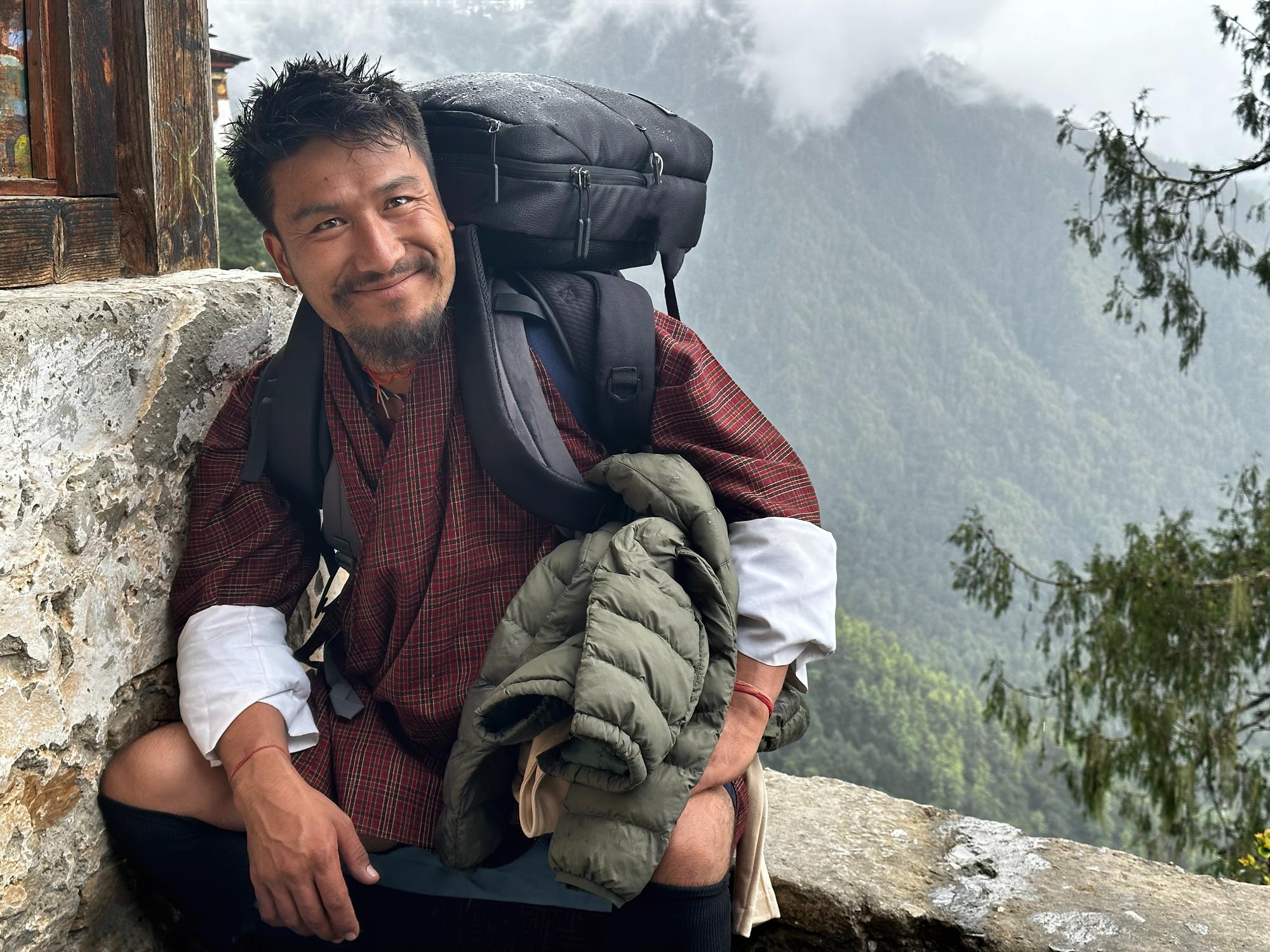
“The Druk Path starts in Paro, where our International Airport is, and runs to Thimphu, the capital of Bhutan,” Karma says. “We go all of the way up into the mountains; across undulating valleys and there are glacial lakes and fantastic mountain views. Sometimes you come across yak herders and highlanders, and there are wild, very endangered birds like Mongol pheasants.

“It is a very interesting trek; very beautiful, and in a short span of time you get up very high, up above the tree line and go to the meadows and visit some of those really beautiful glacial lakes.
“We call it the most popular trek because of the proximity to Paro, but because of our tourism policy of charging a sustainable development fee of $100 US per person, per night - that's where our costs begin - and because also of the accessibility, there are fewer people who come and trek in Bhutan."
The price is higher, but the trails are quieter. The tourism is impactful and sustainable - and the mountainous scenery is some of the best in the world.
Inspired? Check out our adventure and hiking holidays in Bhutan now!

